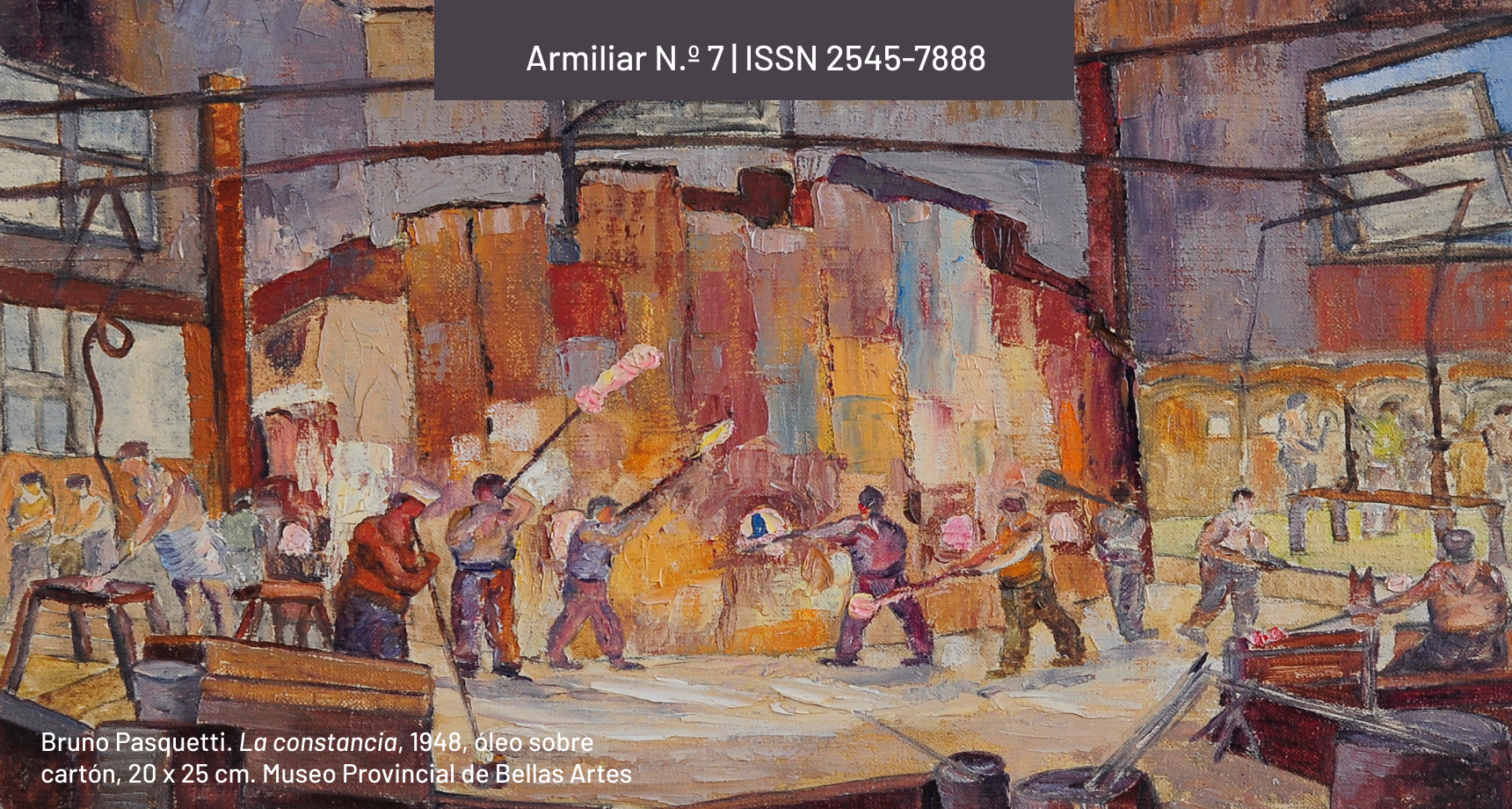Origins of Anatomical Drawing
Von Calcar, Da Vinci and Buonarroti from Vasari’s Pen
DOI:
https://doi.org/10.24215/25457888e050Keywords:
Anatomy, Empiricism, Renaissance, Revolution, Scientific drawingAbstract
This article will investigate the origins of anatomical drawing as such, analyzing the work of three European Renaissance artists. The starting point for the selection of Jan Von Calcar (1499-1546), Leonardo Da Vinci (1452-1519) and Michelangelo Buonarroti (1475-1564) is the work of Giorgio Vasari, The Lives of the Most Excellent Architects, Painters and Italian sculptors (1550), considered the first book on Art History. Likewise, the different reasons that lead to the implementation of a more empirical look within the visual arts and anatomical studies are reviewed, starting from the revolution of Andrea Vesalio, author of De Humani Corporis Fábrica (1543).Downloads
References
Da Vinci, L. (1509-10). El sistema cardiovascular y órganos principales de la mujer. https://www.aryse.org/?s=El+sistema+cardiovascular+y+%C3%B3rganos+principales+de+la+mujer
De Luzzi, M. (1316). Figura femenina de Anatomía. https://collections.nlm.nih.gov/catalog/nlm:nlmuid-101436714-img
Laín Entralgo, P. (1978). Historia de la Medicina. Editorial Salvat.
Laín Entralgo, P. (1964). Miguel Ángel y el cuerpo humano. [Discurso leído el día 24 de octubre de 1964 en el Instituto de España]. https://www.cervantesvirtual.com/obra/miguel-angel-y-el-cuerpo-humano-928766/
Papirowski, M. (4 de octubre de 2022). El Renacimiento. La época de Miguel Ángel y Leonardo da Vinci (1/2). DW Documental. [Archivo de video]. Disponible en https://www.youtube.com/watch?v=e_Snu0jwcNc
Salva, F. (s.f). La anatomía de Leonardo da Vinci Disponible en https://www.leonardodavinci.website/anatomia/
Van Mander, C. (1604). Le livre des peintres. Vie des peintres flamands, hollandais et allemands [La vida de los pintores. Vidas de pintores flamencos, holandeses y alemanes]. Imprimerie de l’art.
Vasari, G. (1550). Leonardo Da Vinci. En Las vidas de los más excelentes arquitectos, pintores y escultores italianos. Edición de 1957, Tomo III. Editorial Iberia.
Vasari, G. (1550). Miguel Angel Buonaroti. Las vidas de los más excelentes arquitectos, pintores y escultores italianos. Varias ediciones. Selección de Cátedra.
Vesalio, A. (1543). De Humanis Corporis Fabrica. [De la estructura del cuerpo humano]. Editorial.
Downloads
Published
How to Cite
Issue
Section
License

This work is licensed under a Creative Commons Attribution-NonCommercial-ShareAlike 4.0 International License.
Current policy since 2019
The acceptance of the manuscript by the magazine means the non-exclusive cession of the property rights of the authors in favour of the editor, who allows the reuse, after publication (post print), under a license Attribution-NonCommercial-ShareAlikes 4.0 International (BY-NC-SA 4.0).
According to these terms, the material can be copied and redistributed by any means or in any format as long as a) the author and original source of the publication are quoted (magazine and URL of the work), access to the license is provided and whether changes have been made is mentioned; and b) the material is not used for commercial purposes.
The cession of non-exclusive rights means that after the publication (post print) in Armiliar the authors can publish their work in any language, means and format; in such cases it must be mentioned that the material was originally published in this magazine. Such cession also means the authorization of the authors for the work to be collected by SEDICI, the institutional archive of the Universidad Nacional de La Plata, and to be spread in the databases that the editorial team considers appropriate to increase the visibility of the publication and its authors.
Moreover, the magazine encourages the authors to deposit their productions in other institutional and thematic archives under the principle that offering the society the scientific and academic production without any restrictions contributes to a greater exchange of the global knowledge.



























